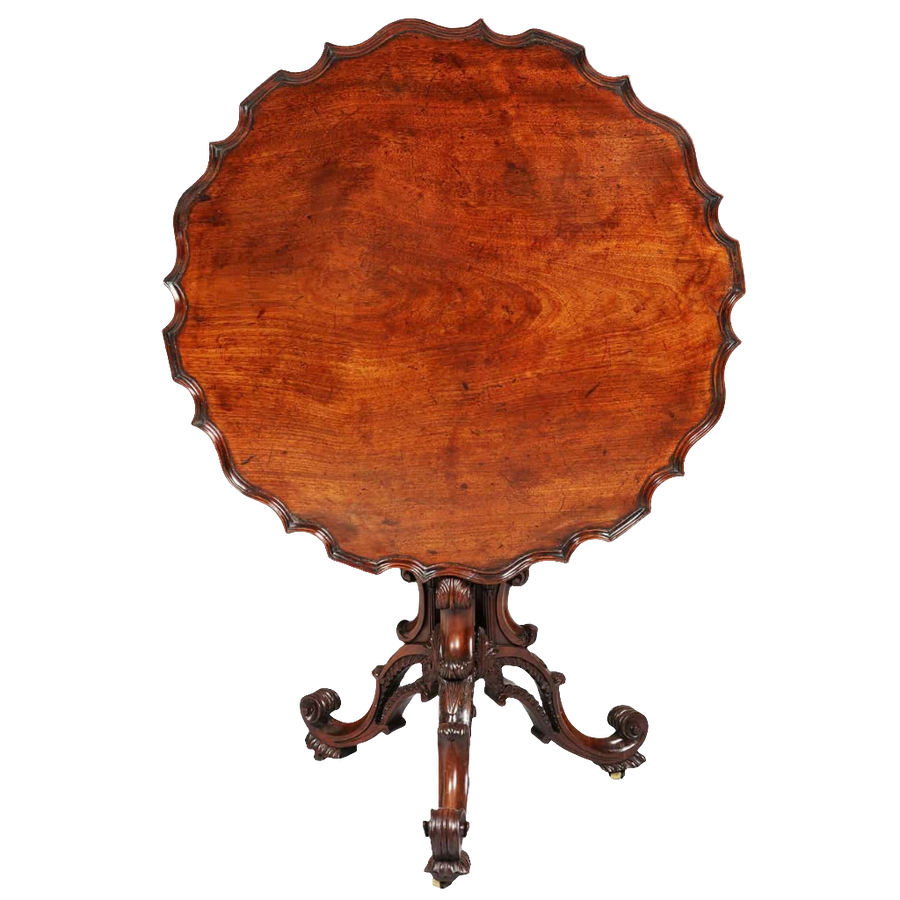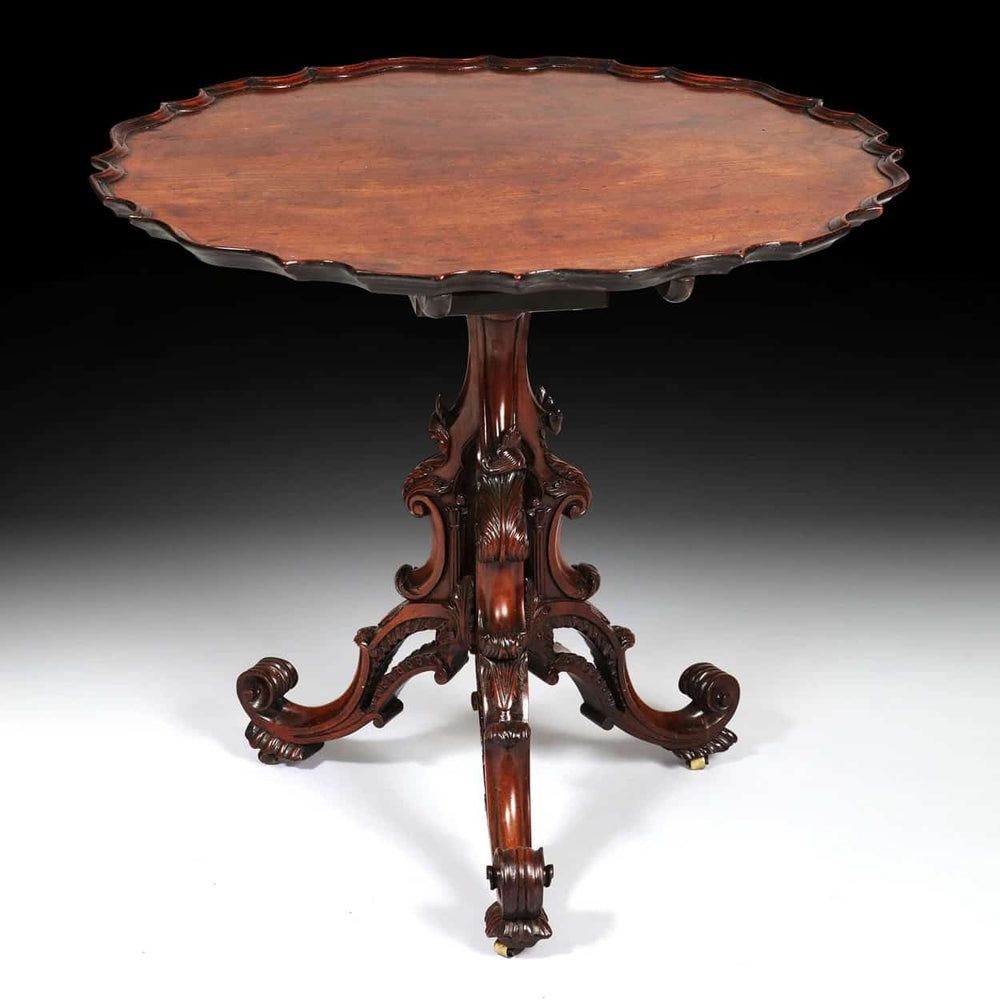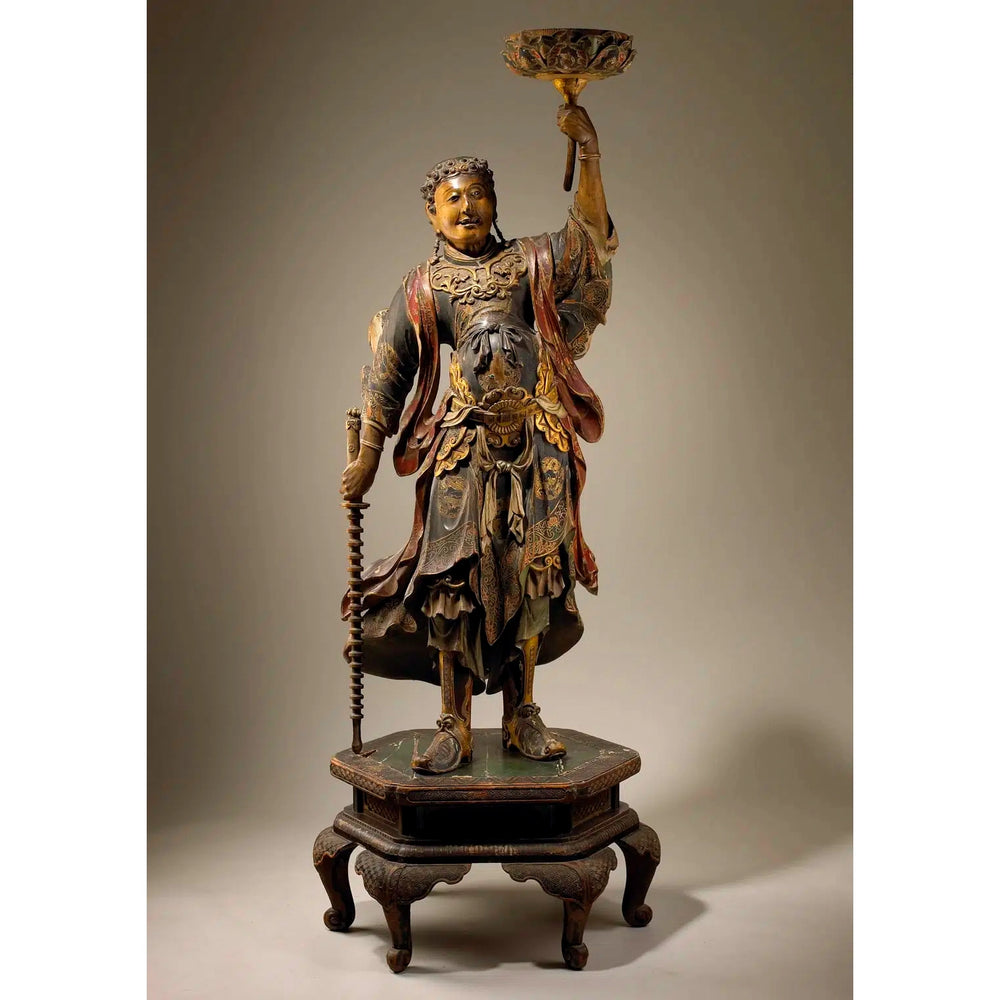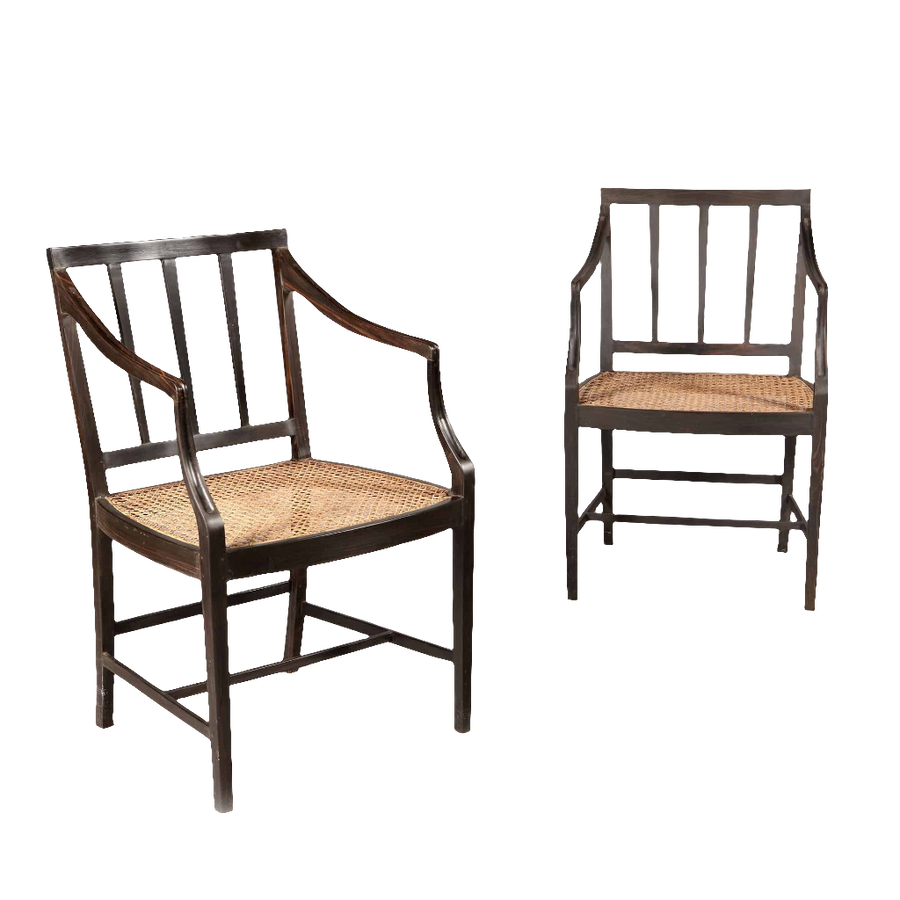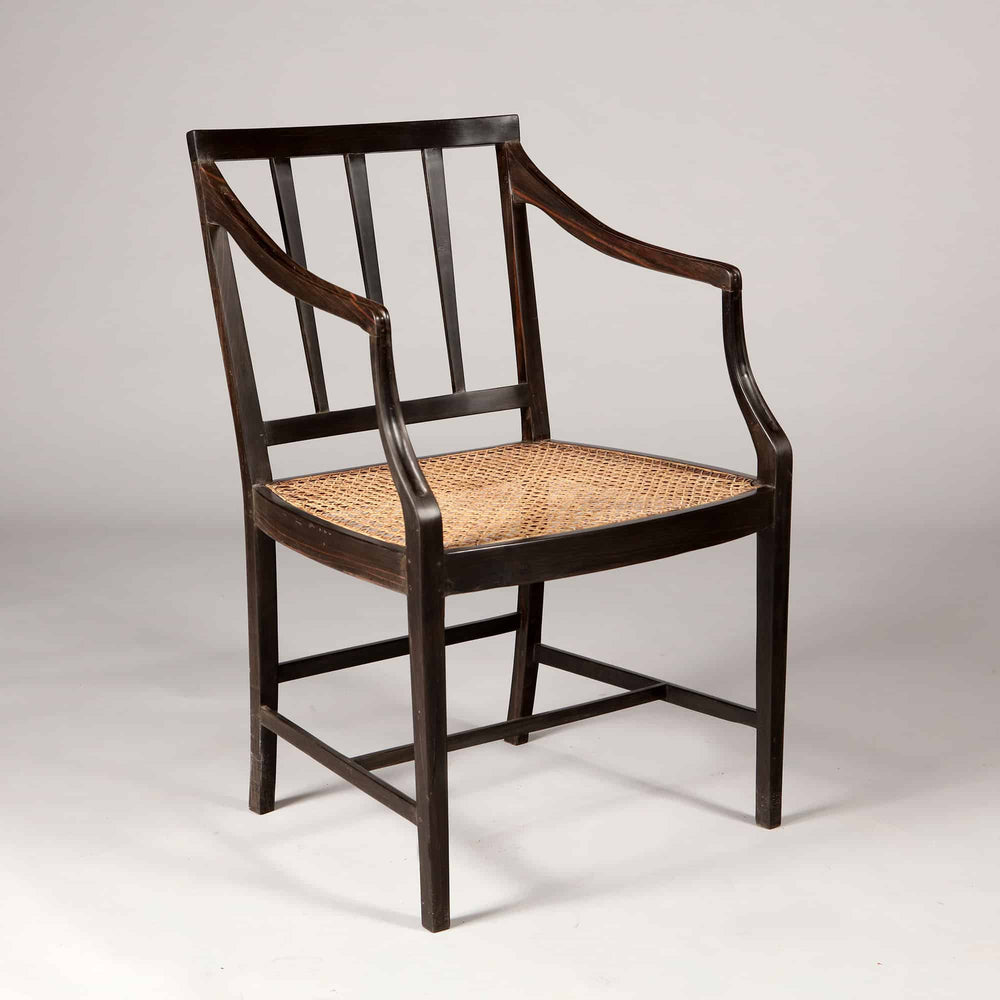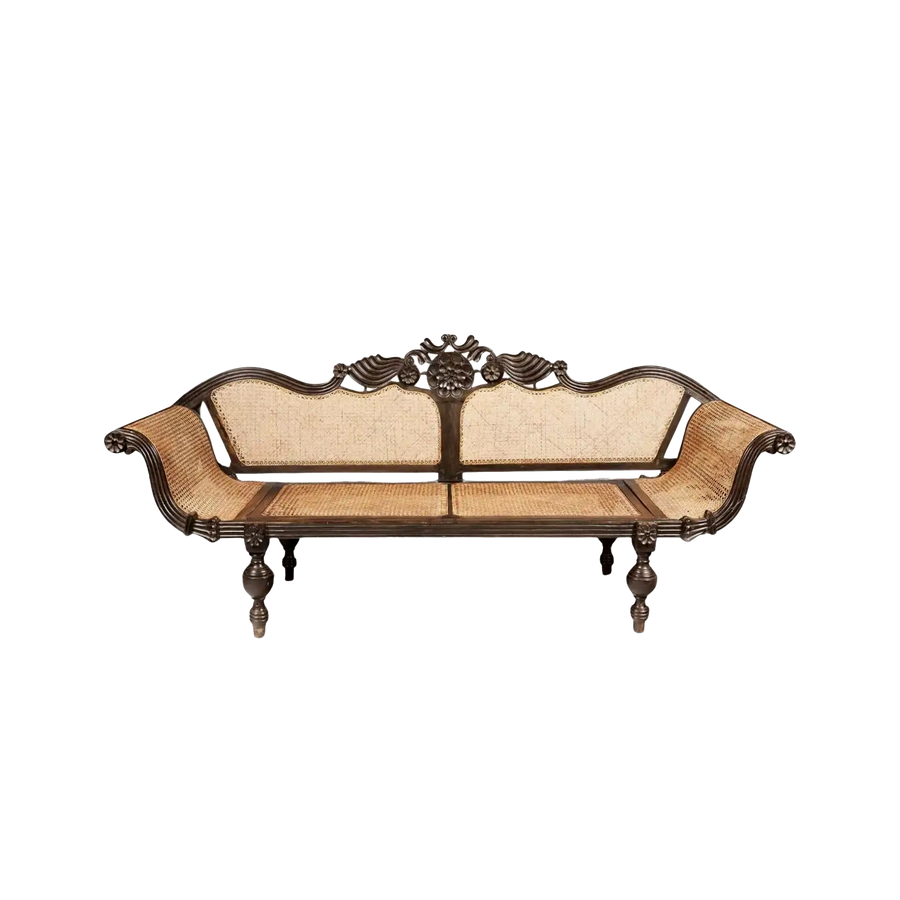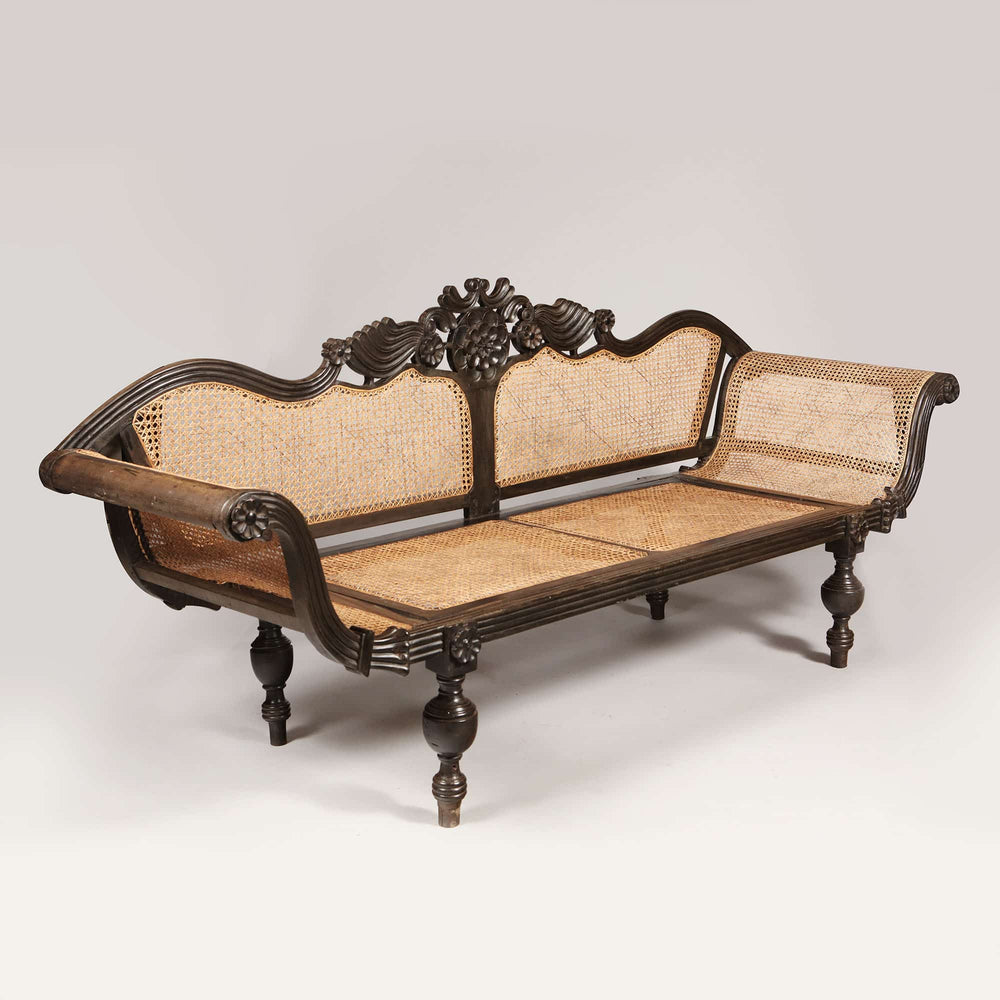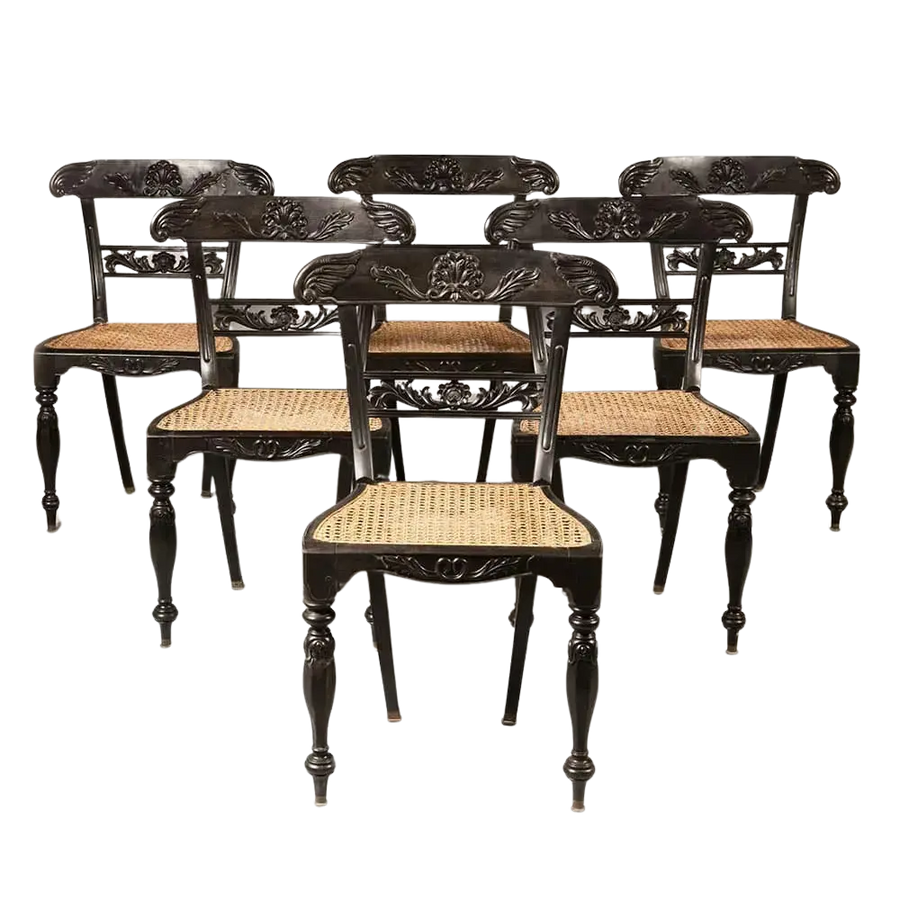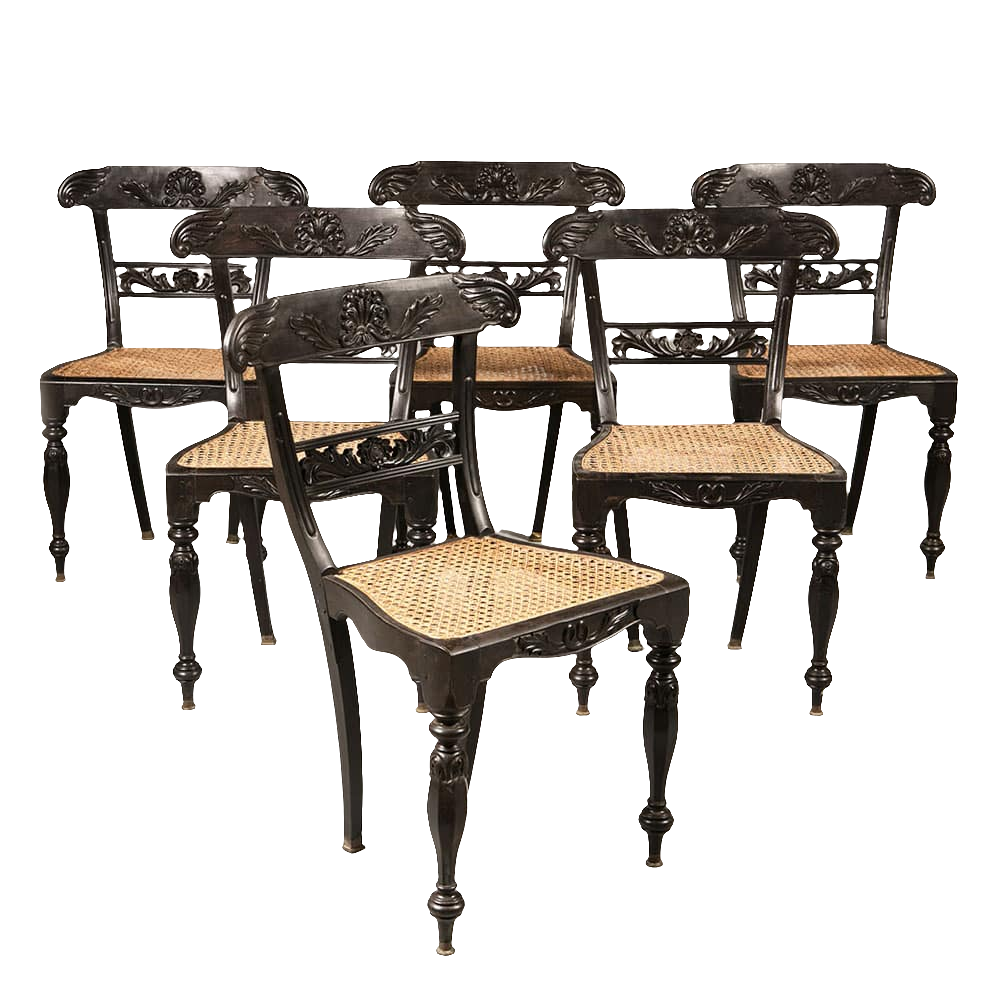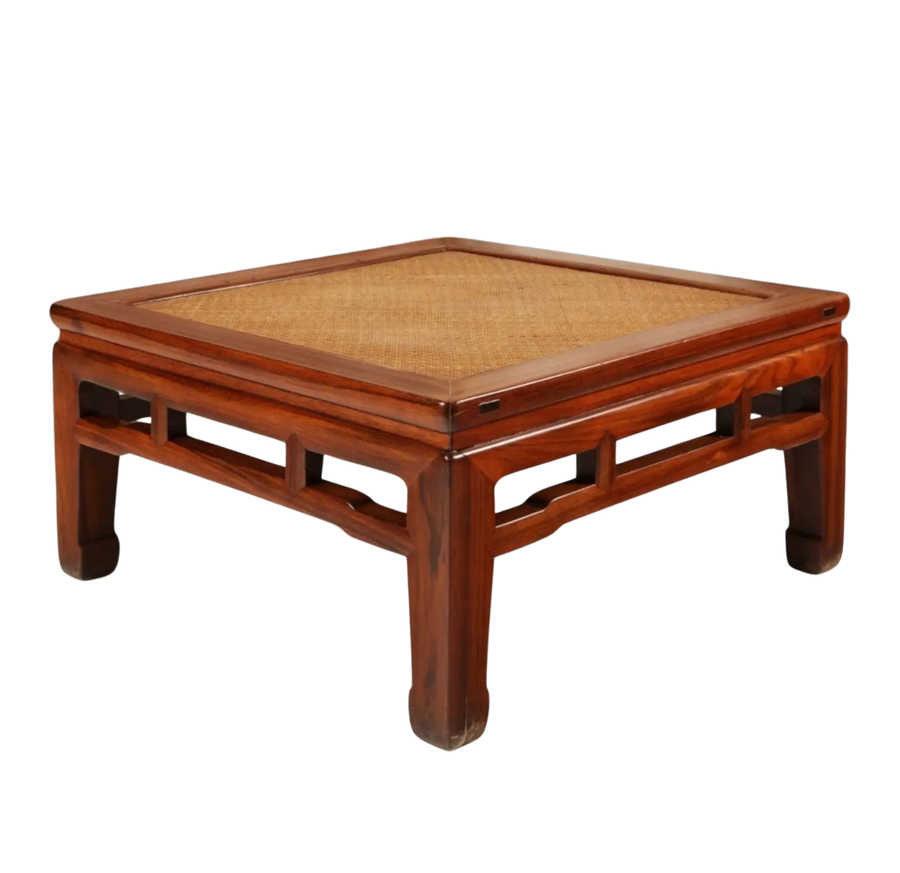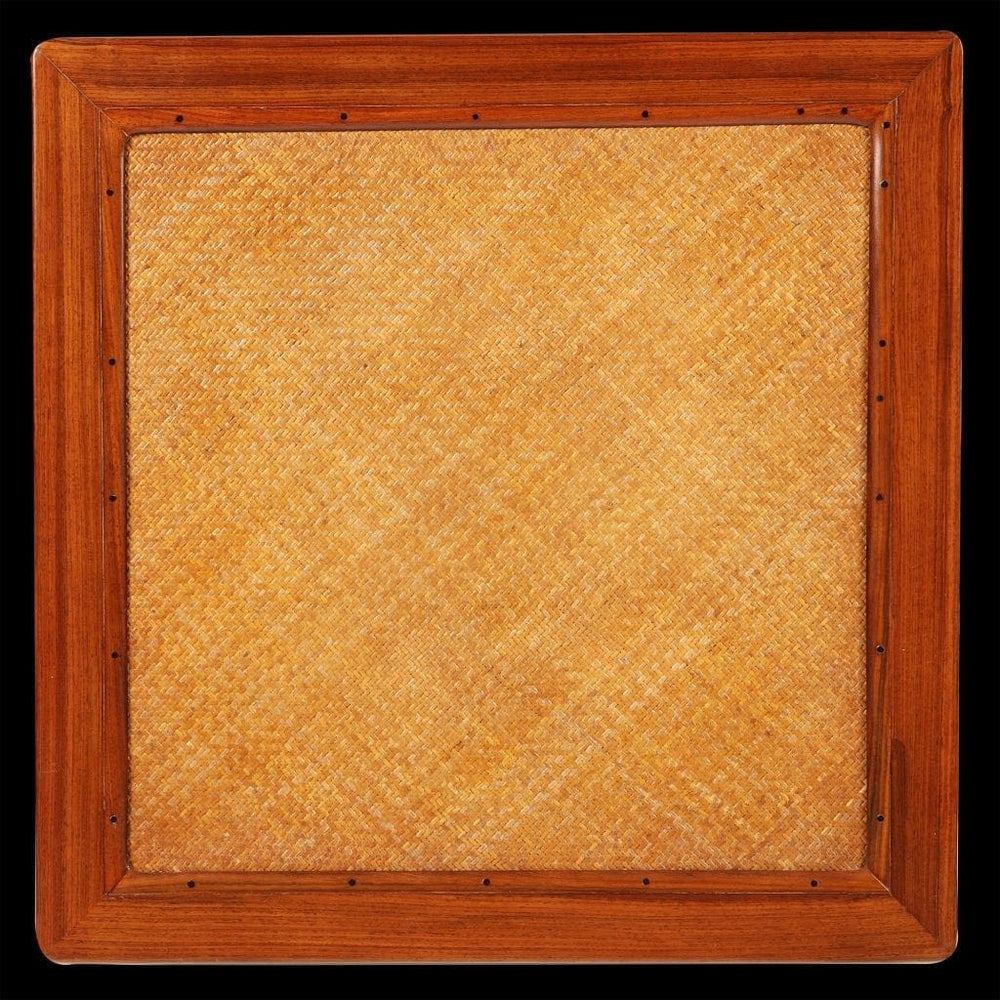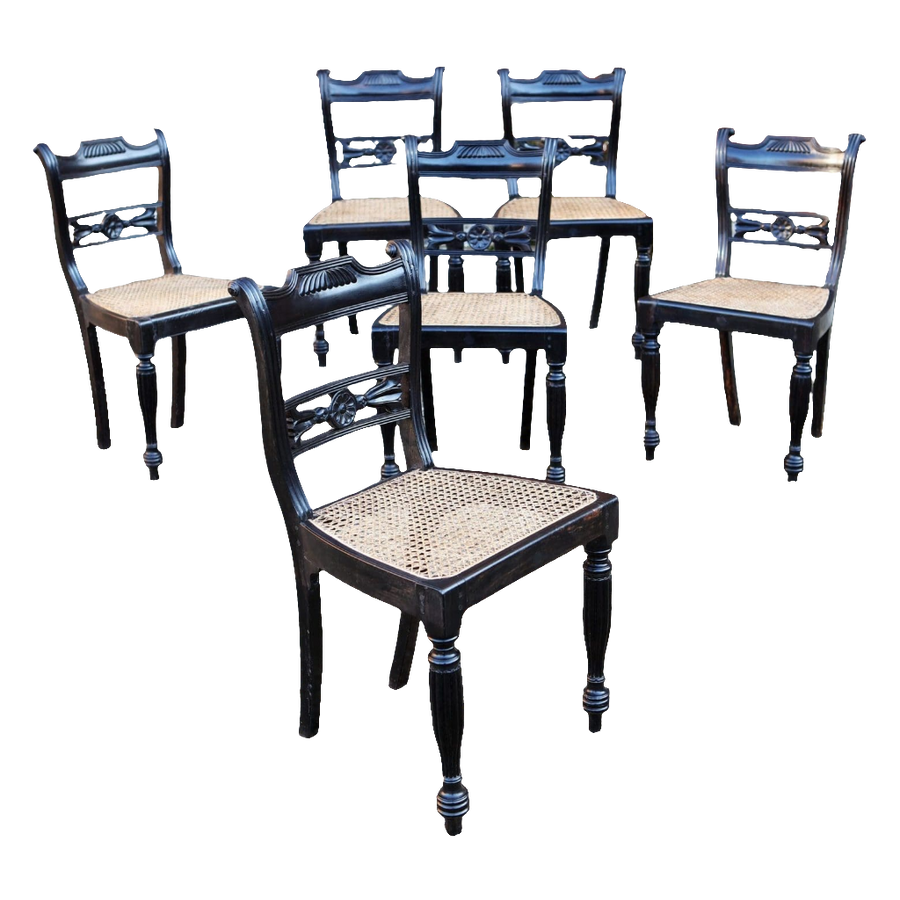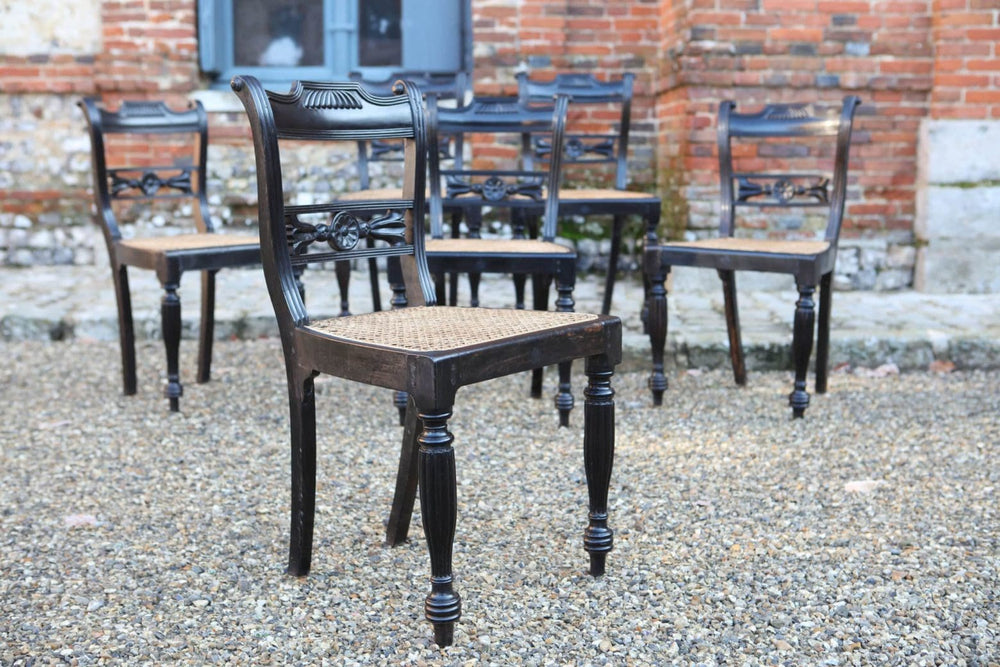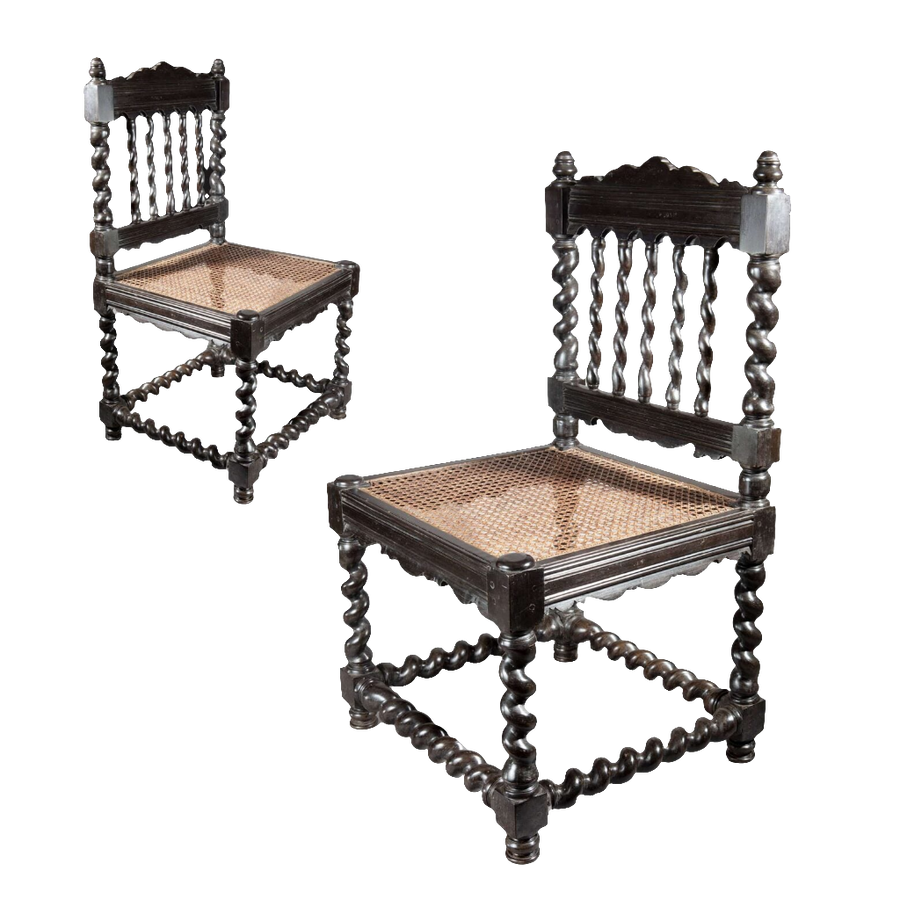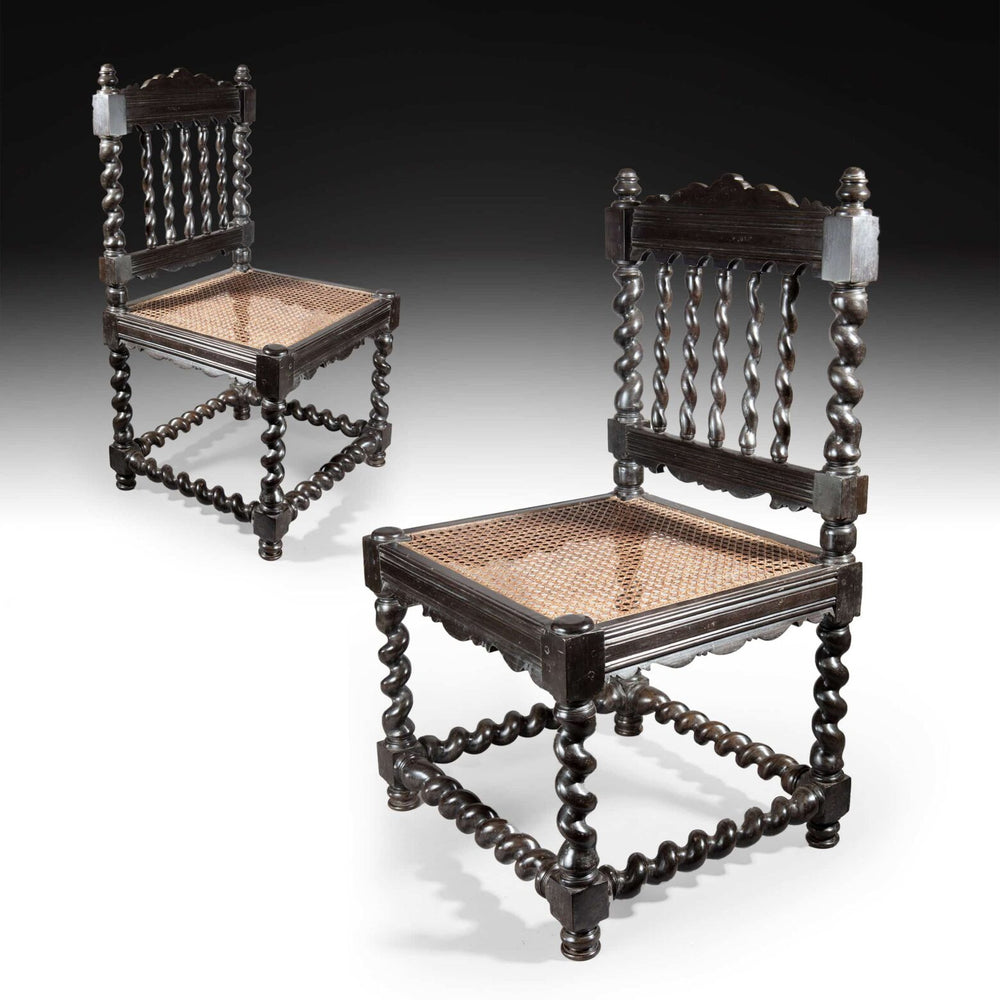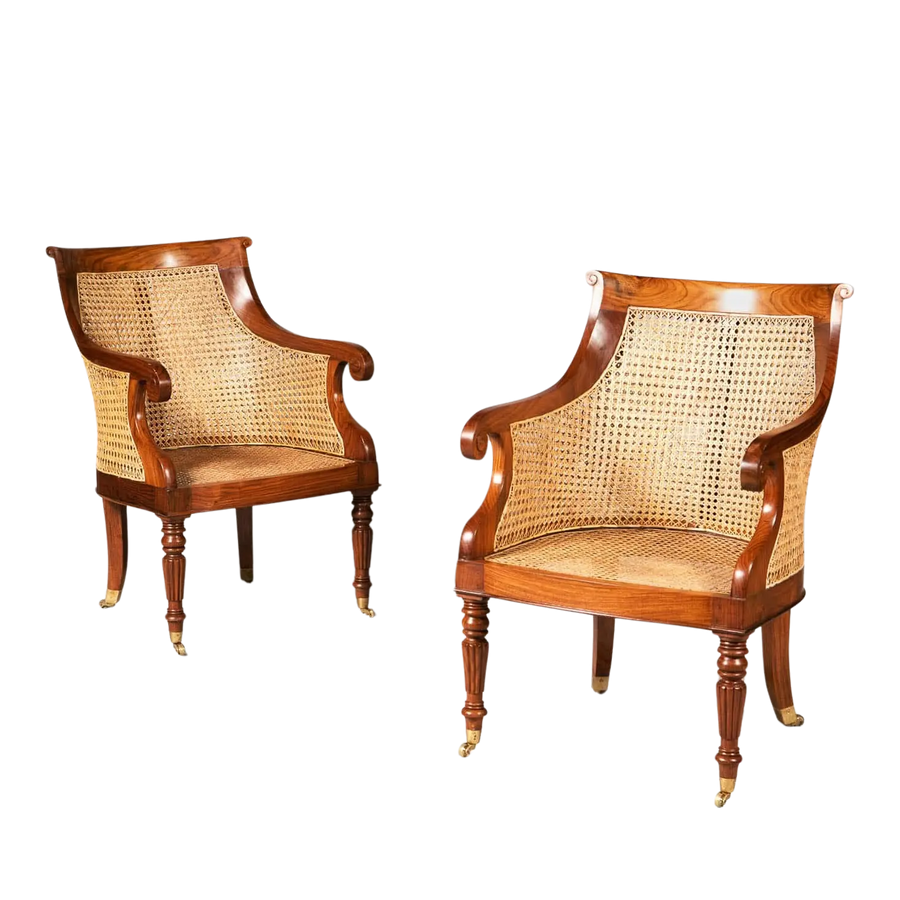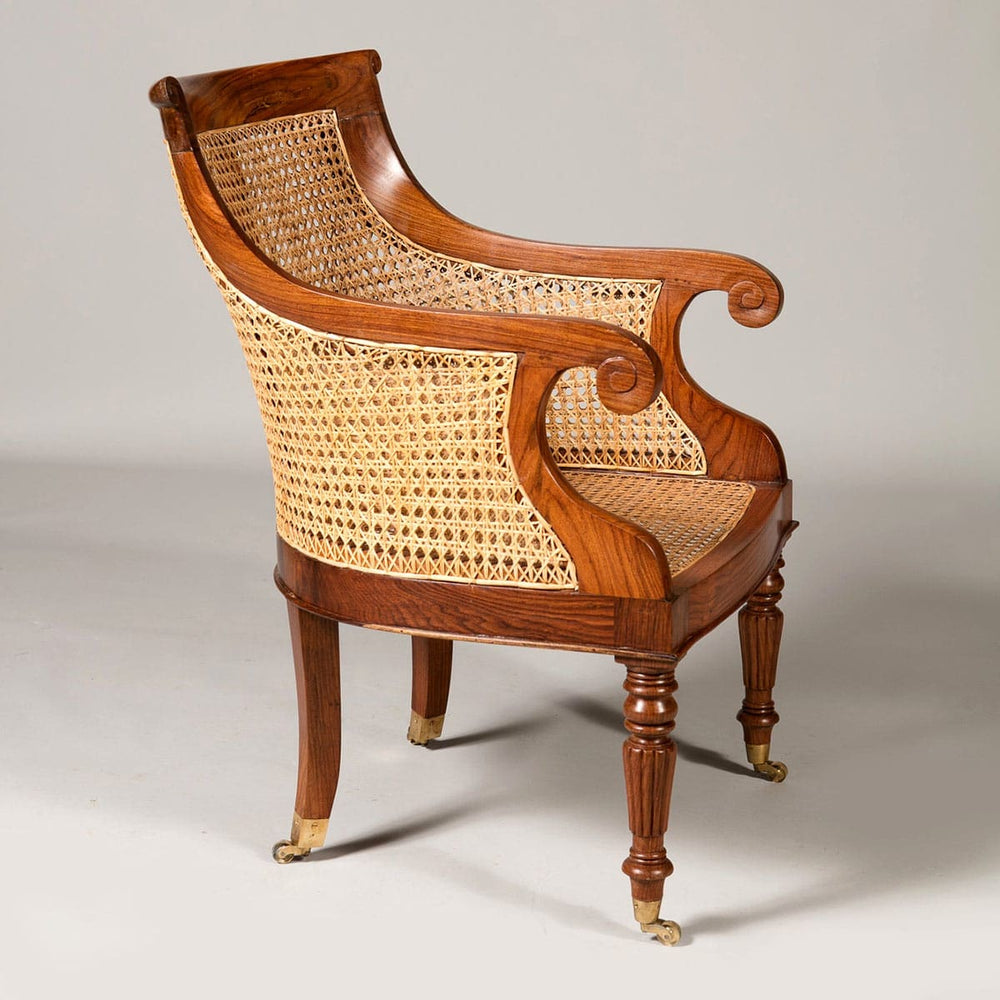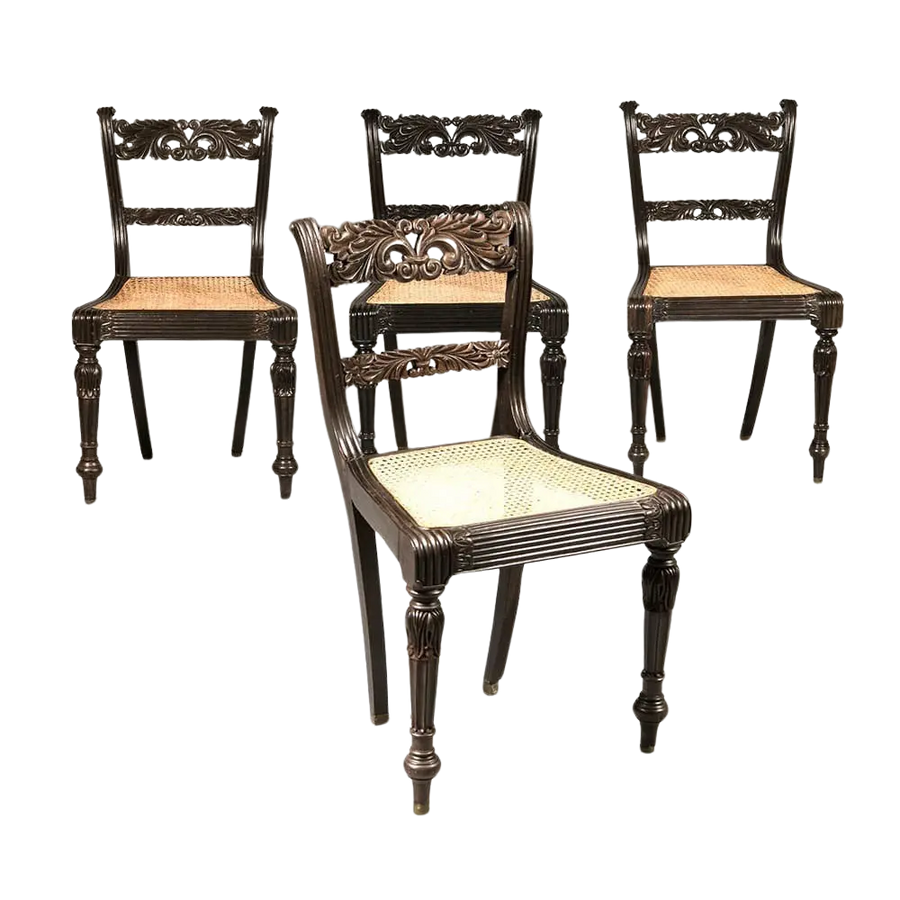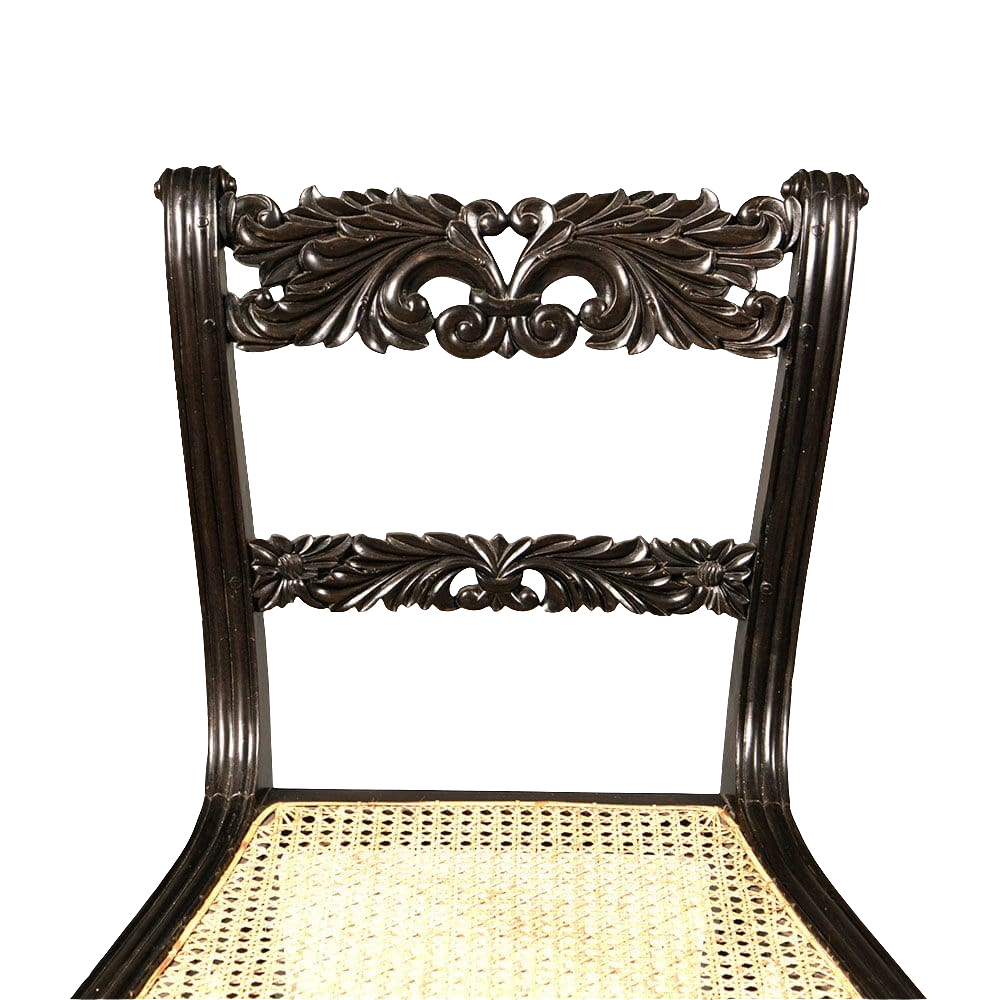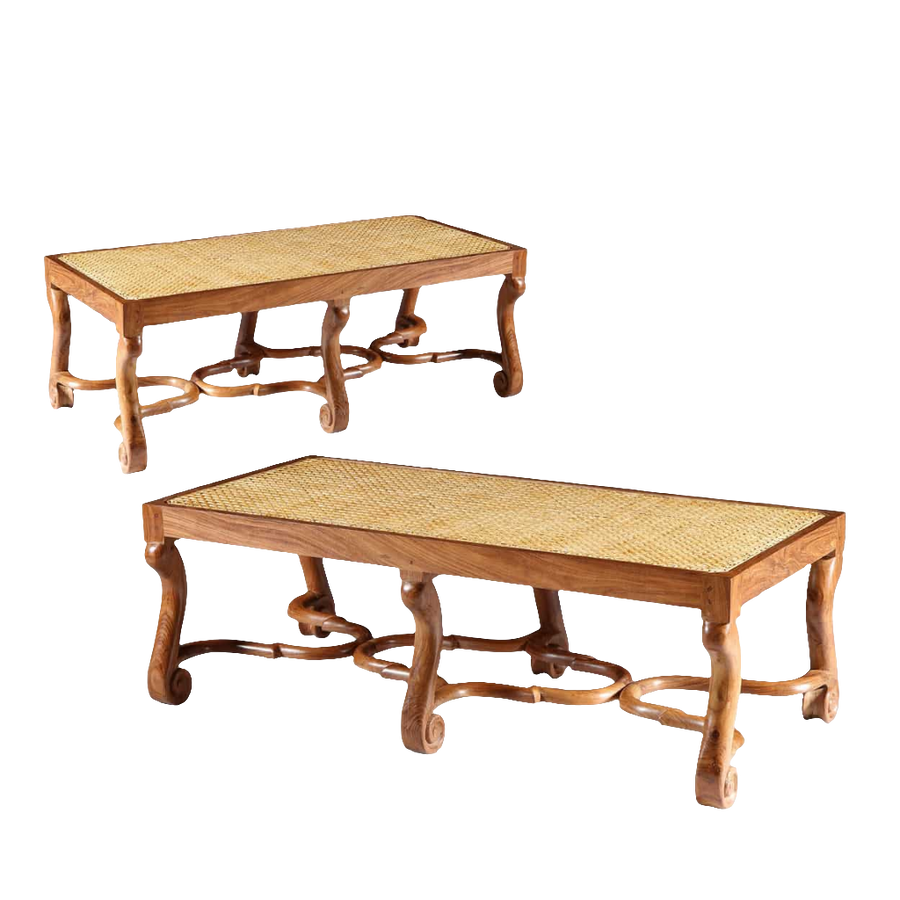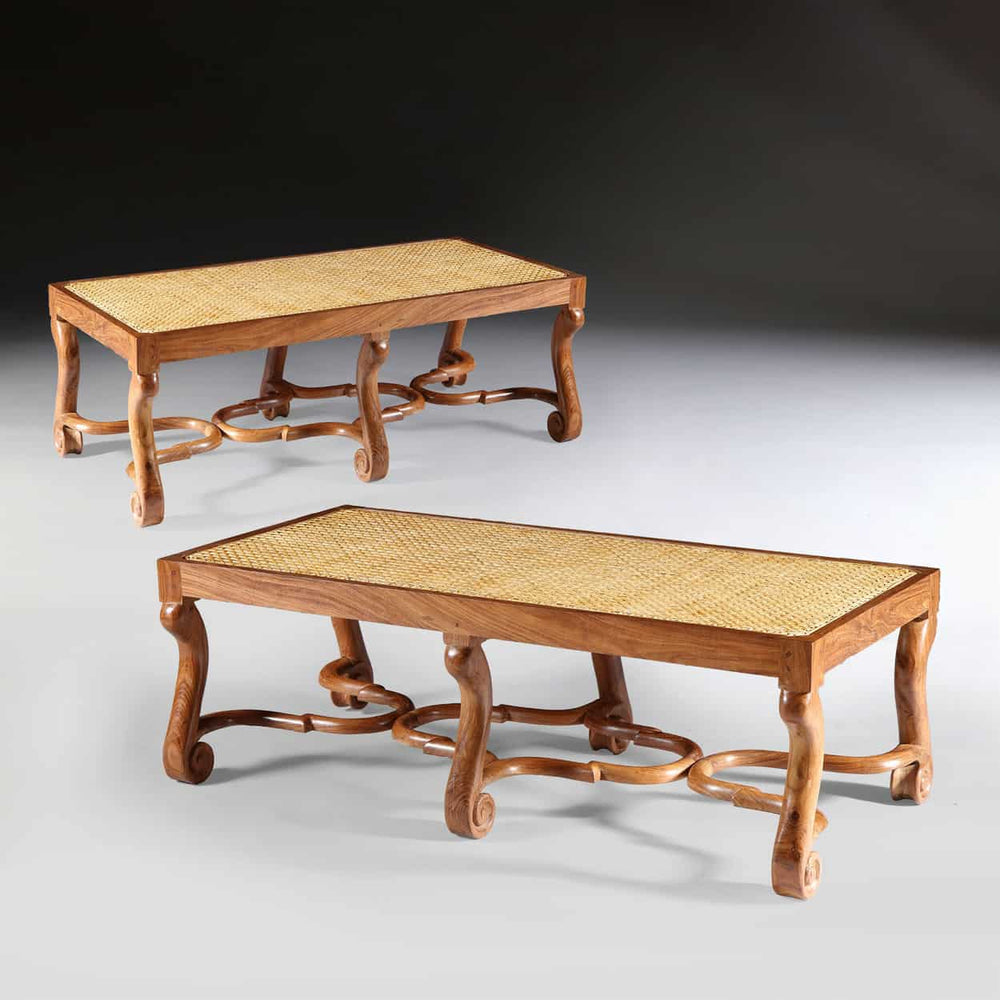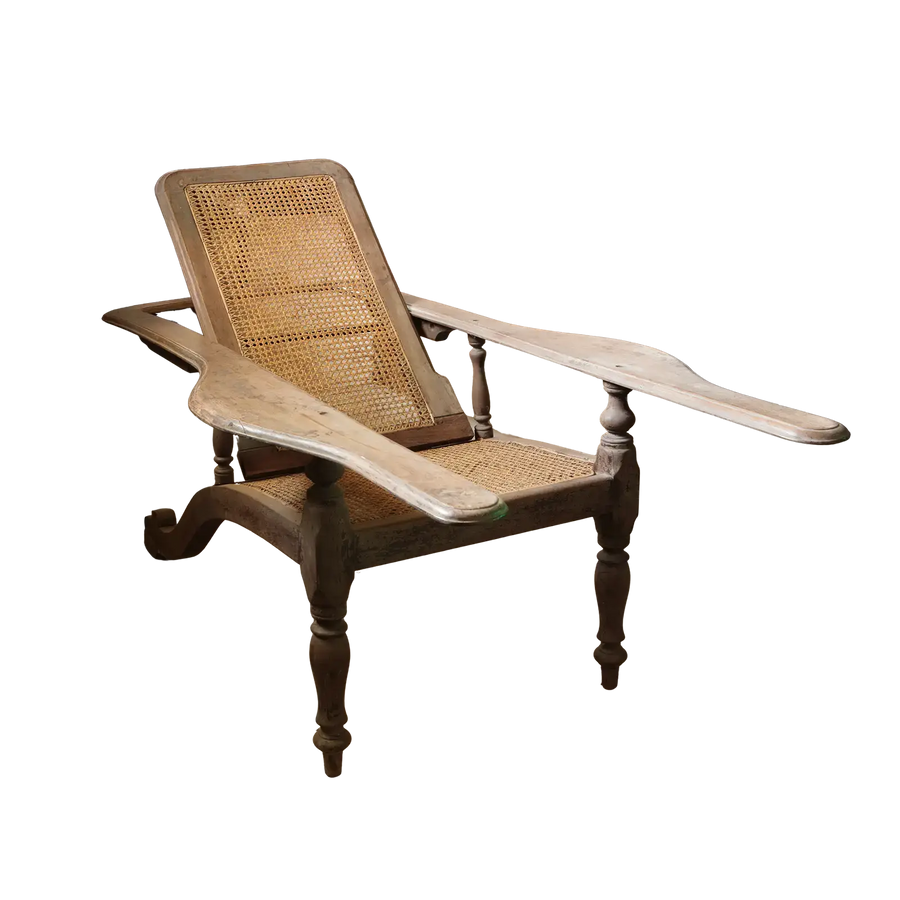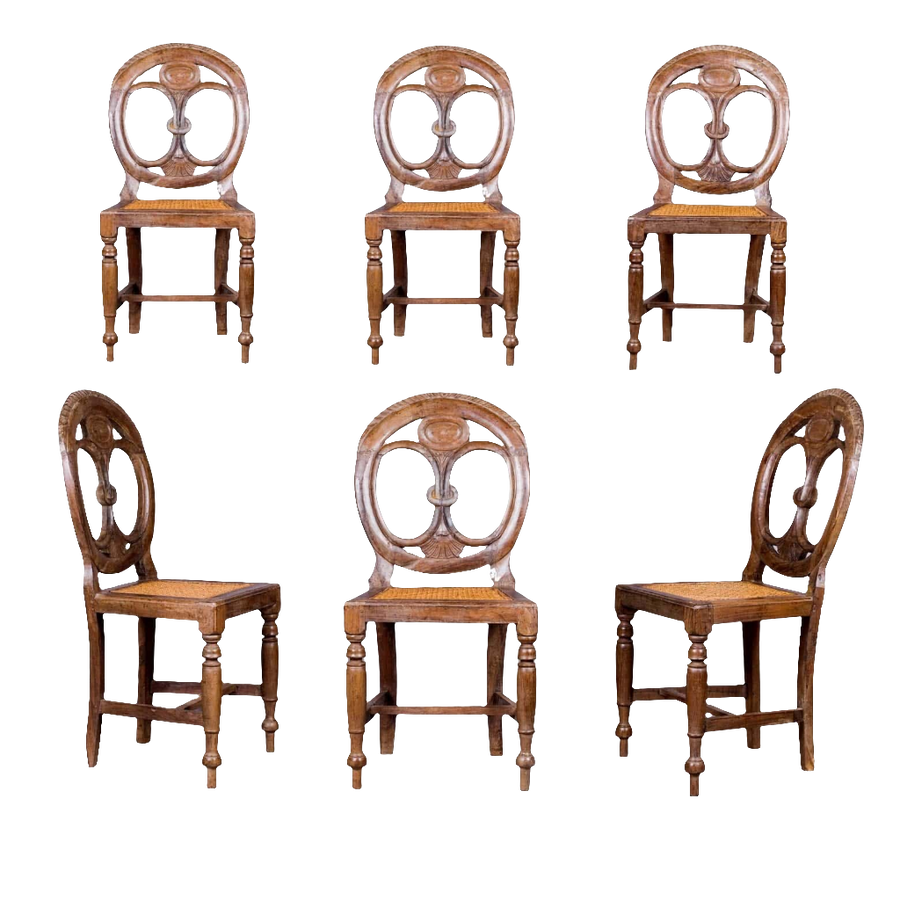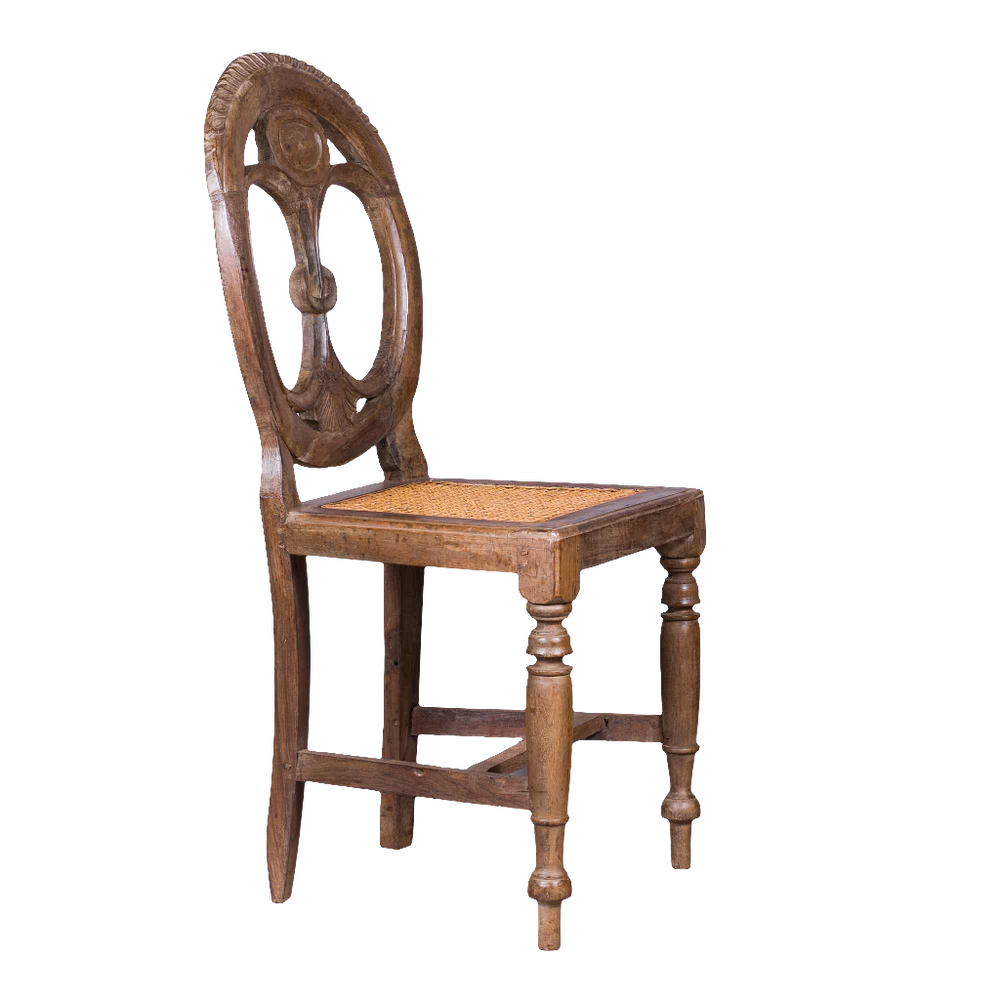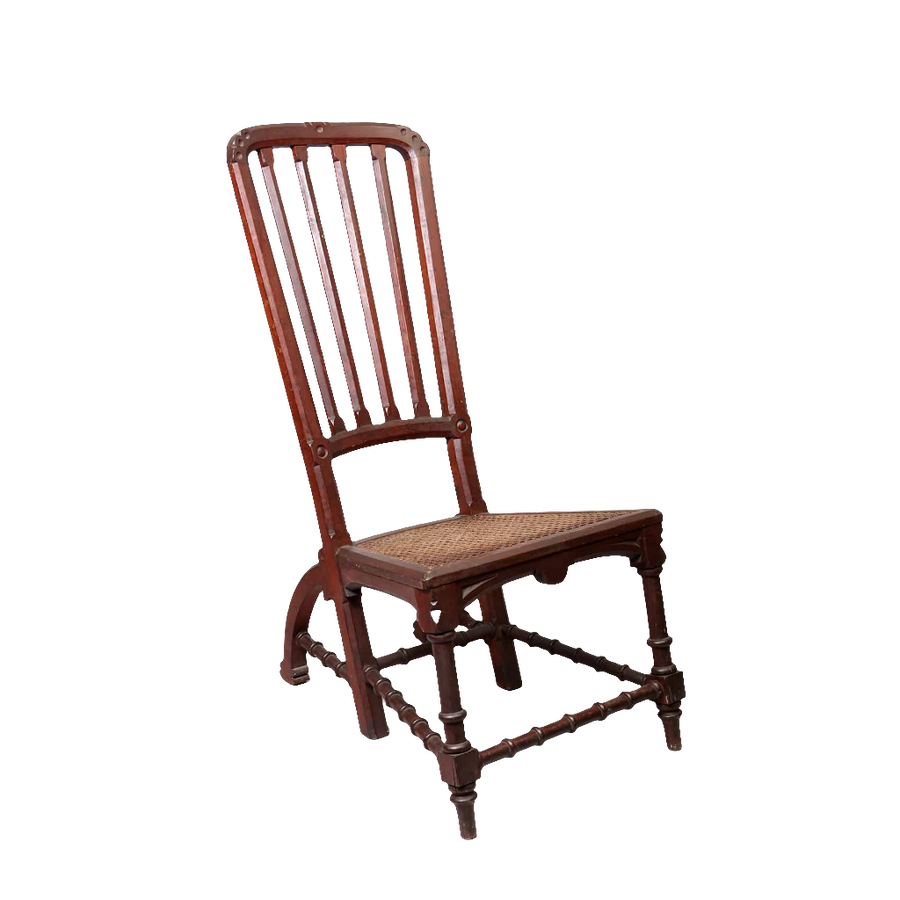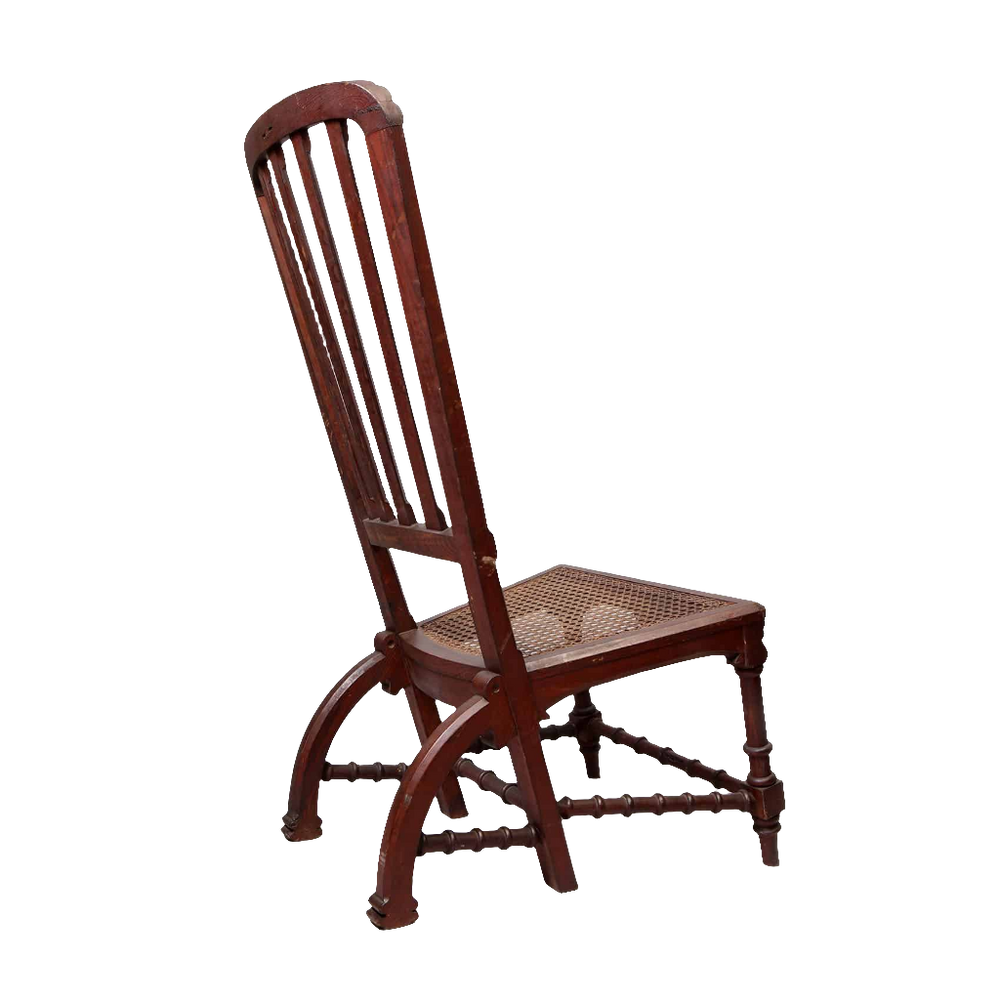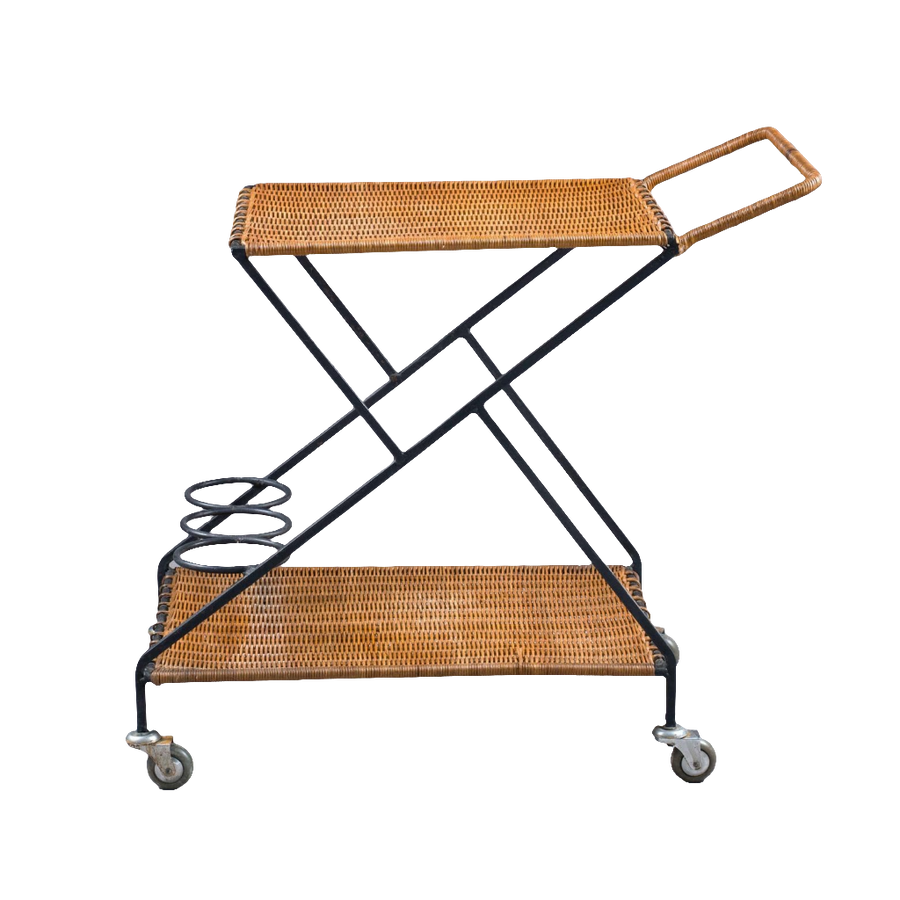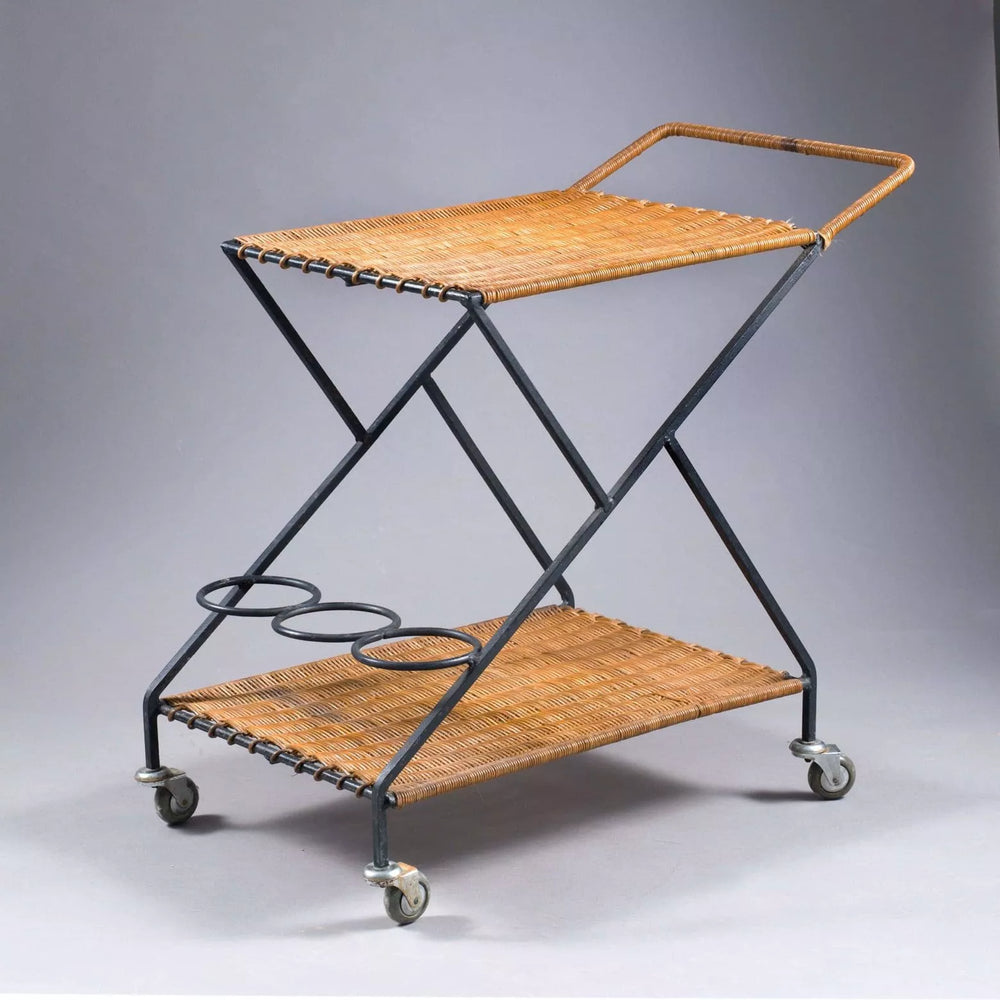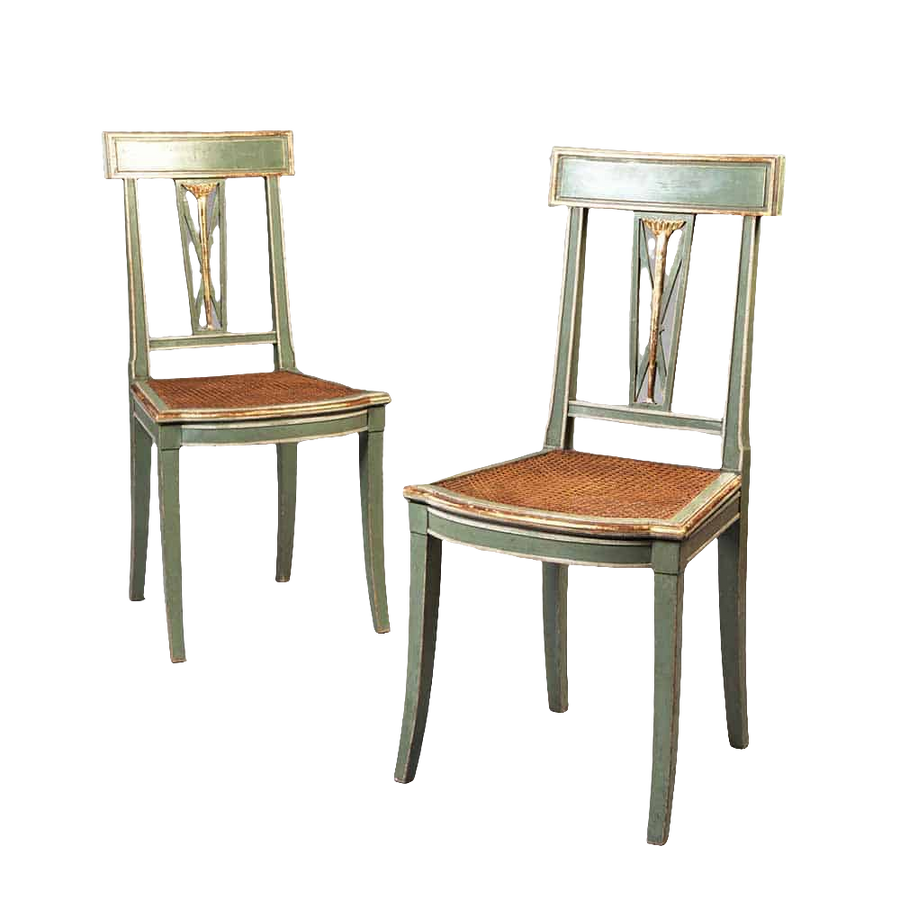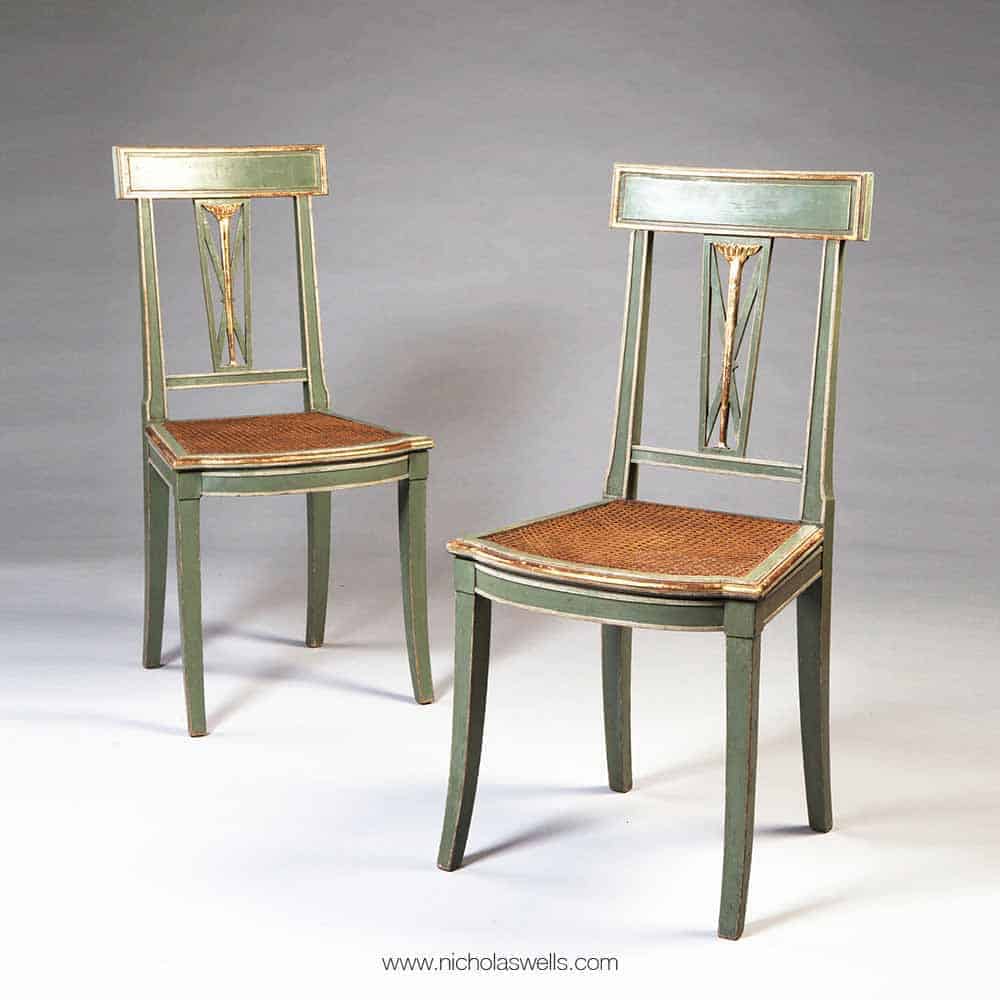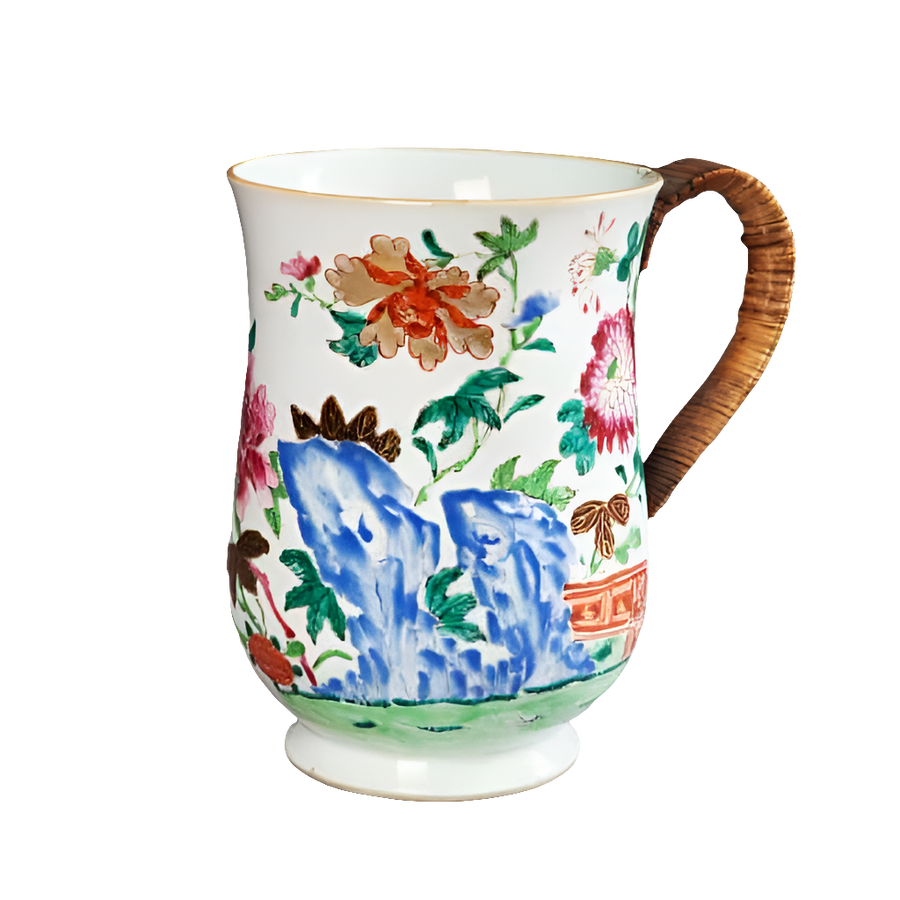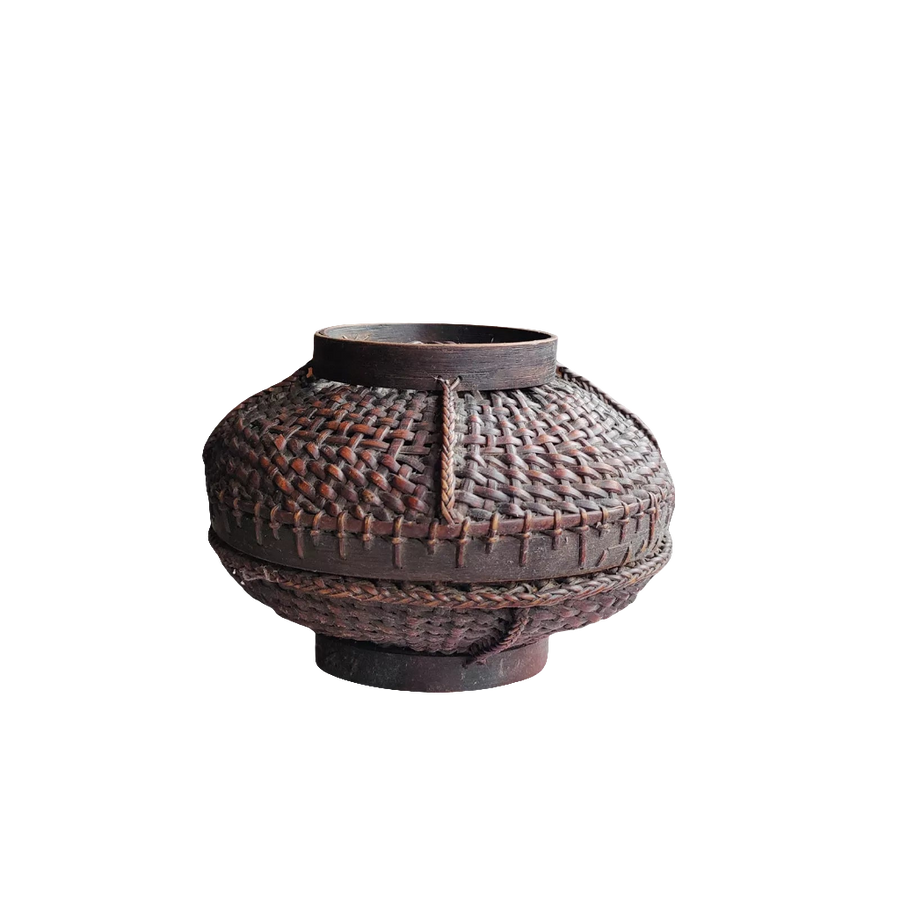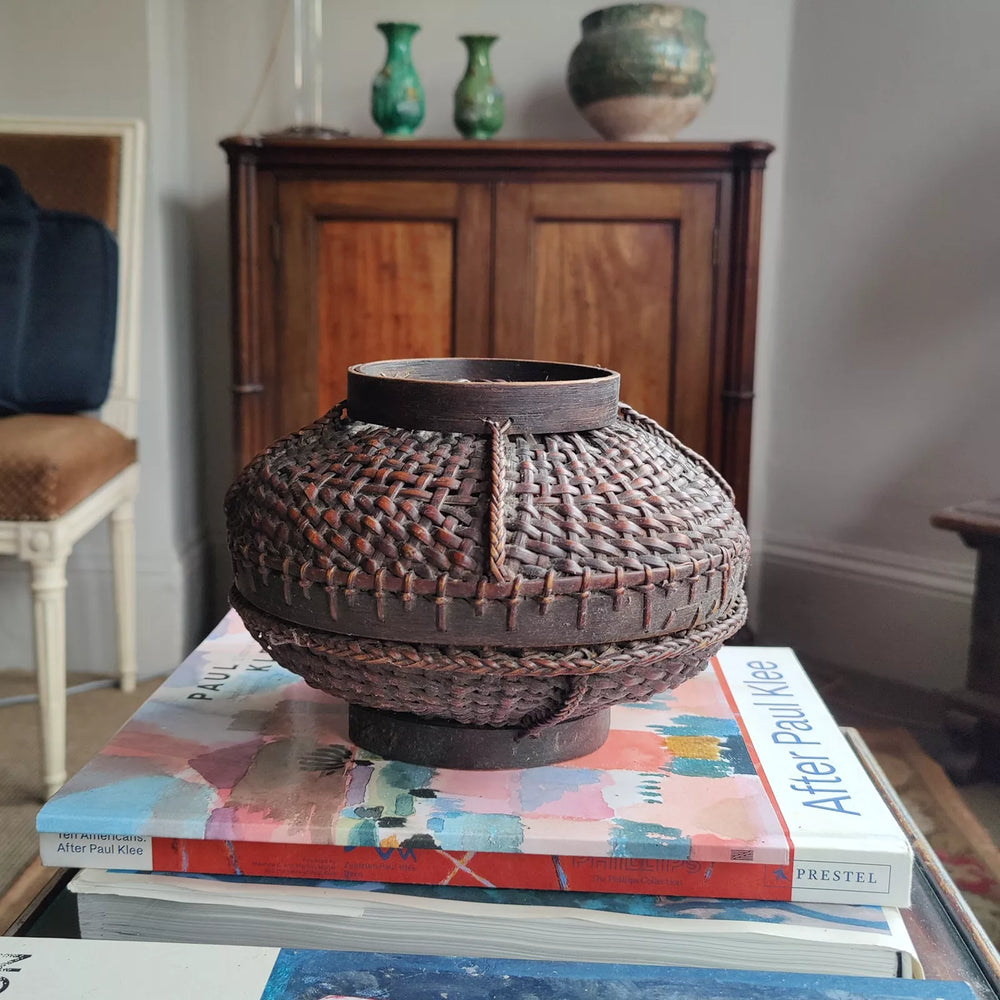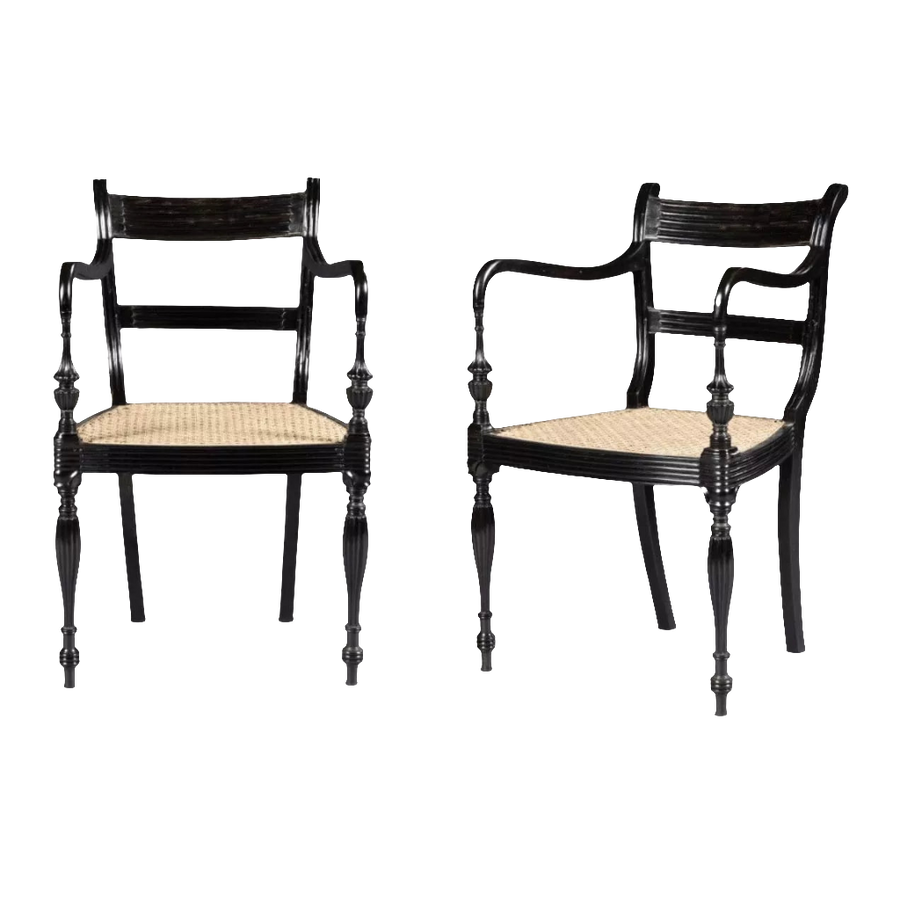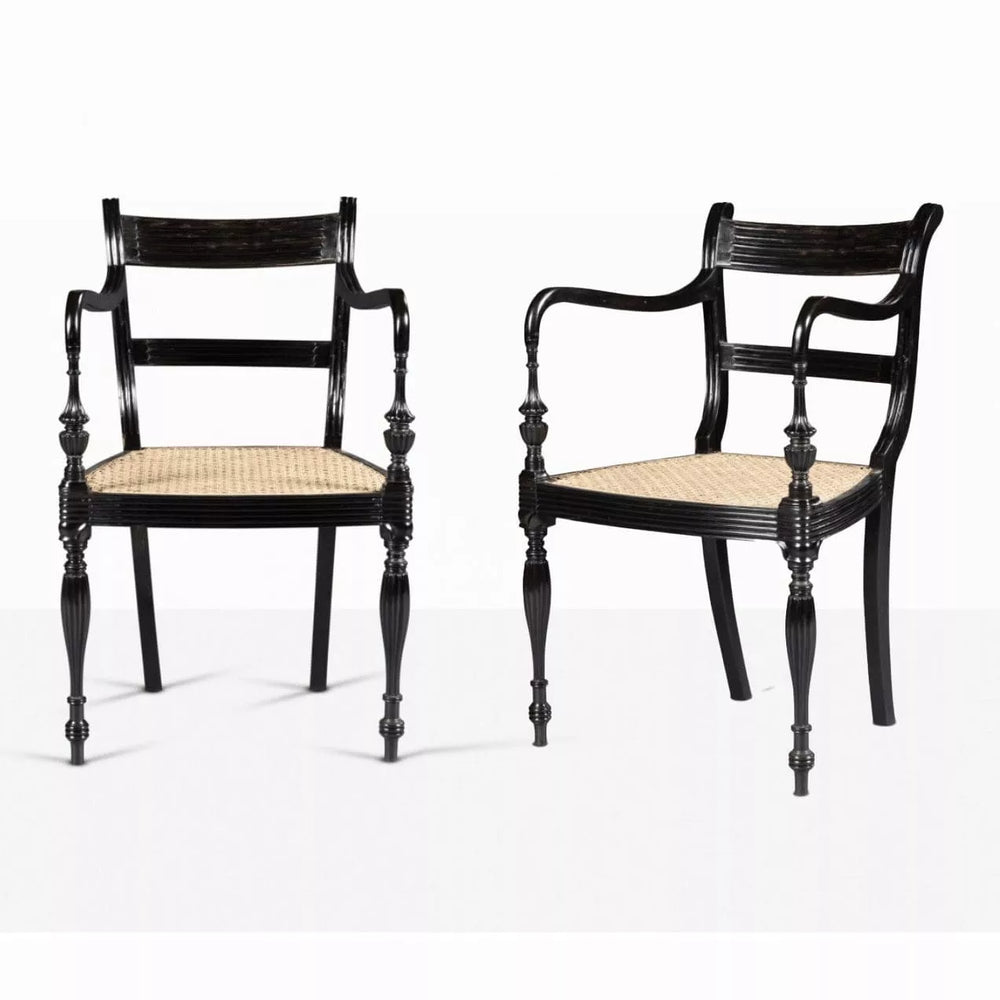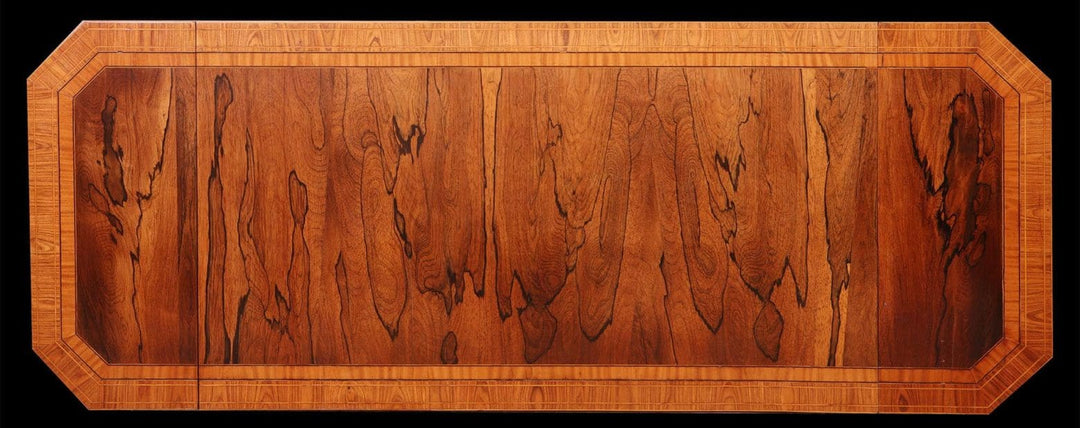Caning is a traditional furniture-making technique that involves weaving thin strips of rattan to create seats, backrests, and decorative panels, commonly seen in antique chairs and settees from the 17th to 19th centuries. Originating in Asia and later adopted in Europe, especially in England and France, caning became popular for its combination of strength, lightness, and ventilation, making it ideal for warm climates and elegant interiors. The most common form, a six-way weave, showcases the artisan’s skill and precision, turning a functional element into a decorative art form. Highly valued by collectors today, caned furniture reflects both the craftsmanship and cultural aesthetics of its time.
Caning is a traditional furniture-making technique that involves weaving thin strips of rattan to create seats, backrests, and decorative panels, commonly seen in antique chairs and settees from the 17th to 19th centuries. Originating in Asia and later adopted in Europe, especially in England and France, caning became popular for its combination of strength, lightness, and ventilation, making it ideal for warm climates and elegant interiors. The most common form, a six-way weave, showcases the artisan’s skill and precision, turning a functional element into a decorative art form. Highly valued by collectors today, caned furniture reflects both the craftsmanship and cultural aesthetics of its time.
Read More





